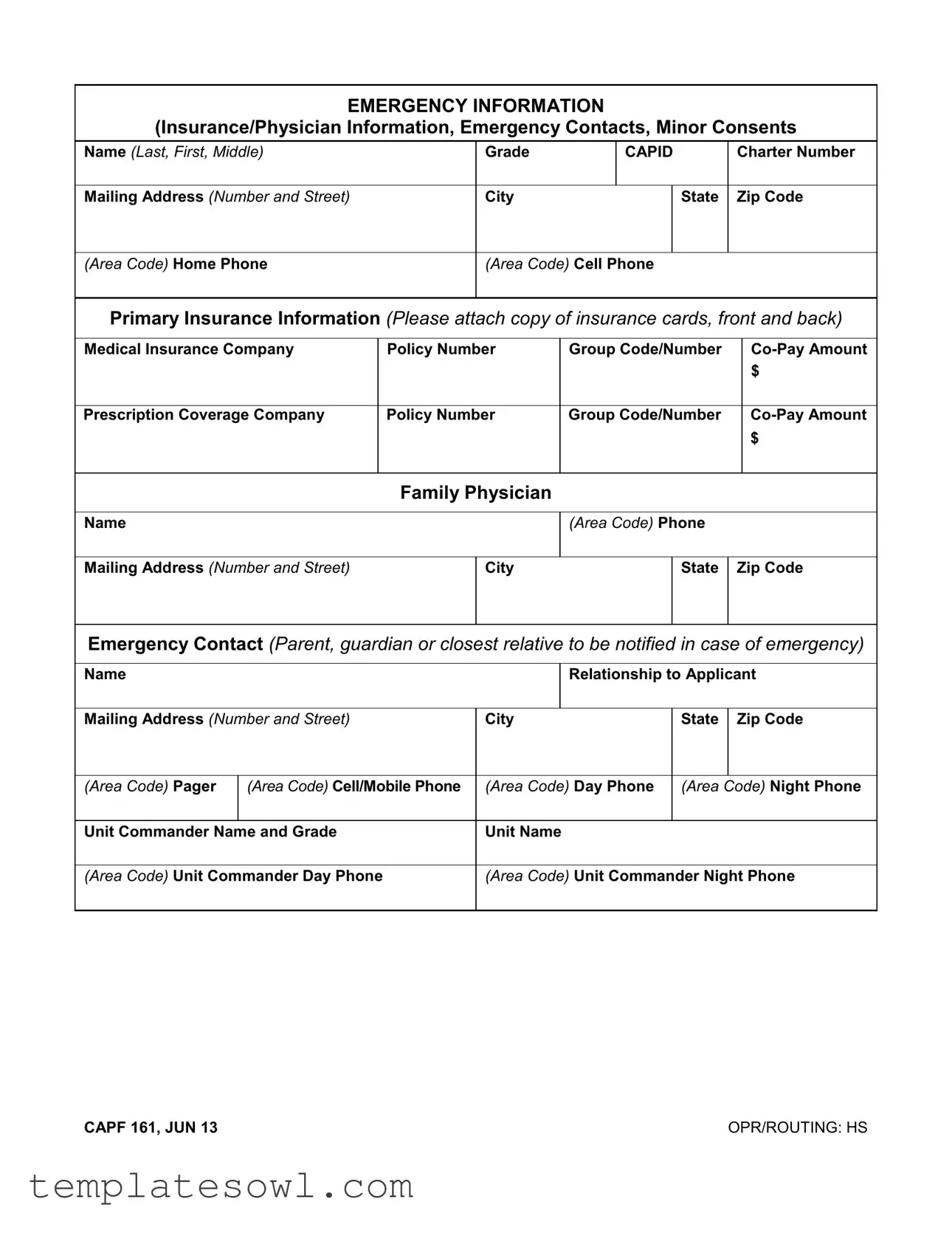What is the purpose of the CAPF 161 form?
The CAPF 161 form is designed to collect essential emergency information for individuals involved in the Civil Air Patrol (CAP). It gathers data related to insurance, physician details, emergency contacts, and minor consent. This information plays a vital role in ensuring swift and efficient responses in emergency situations, assisting medical personnel and CAP staff in making informed decisions on behalf of the individual listed on the form.
What information do I need to provide on the CAPF 161 form?
When filling out the CAPF 161 form, you will need to provide various details. These include the individual's name, grade, CAPID, and charter number. It also requires mailing address information, phone numbers, and insurance details such as the medical insurance company name, policy number, and co-pay amounts. Additionally, you should include contact information for the family physician and emergency contacts, specifically the name, relationship, and various phone numbers. Any consent for minors must also be documented, ensuring that all necessary parties are aware of their responsibilities in case of an emergency.
Why is it important to have accurate information on the CAPF 161 form?
Providing accurate information on the CAPF 161 form is crucial for effective communication and response during emergencies. Inaccurate or outdated contact information may delay medical assistance or prevent the right person from being notified in critical situations. Furthermore, proper insurance details facilitate timely access to healthcare services, which can significantly impact the health outcomes for the individual. Therefore, ensuring that all information is current and complete enhances safety and preparedness.
How often should the CAPF 161 form be updated?
The CAPF 161 form should be updated whenever there are significant changes in the individual's emergency information. This might include changes in insurance provider, medical coverage, contact information, or family physician details. Ideally, it should be reviewed at least once a year or whenever a new event or season begins in CAP activities. Keeping this information current helps ensure that all parties have the most accurate and relevant details in case of an emergency.

